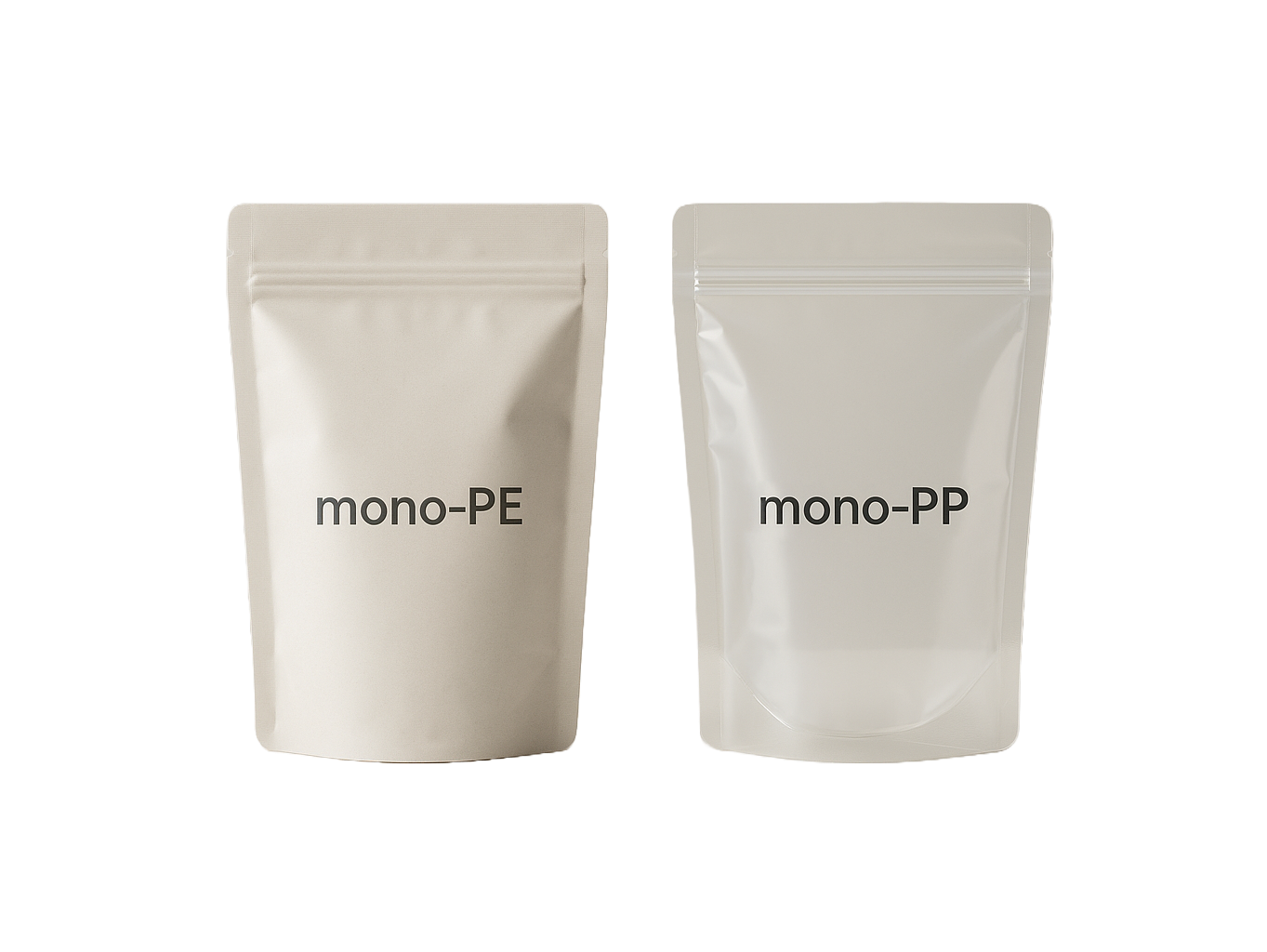What is mono-PE?
Mono-PE packaging is made entirely from one plastic: polyethylene (PE). It’s one of the world’s most commonly used plastics, which comes with a key advantage, explains Rob Engelman: “PE can be easily recycled through regular plastic waste streams.”
PE is made from carbon and hydrogen atoms, which brings a practical benefit. “No toxic substances are released during recycling. Its pure composition and versatility make PE ideal for a wide range of applications.” Another advantage is its low weight – which is convenient for users and efficient in transport. PE is also wear-resistant, resistant to acids, bases, and chemicals, and has a long lifespan. There are several types of PE: LDPE (Low-Density PE), LLDPE (Linear Low-Density PE), and HDPE (High-Density PE). “LDPE is soft and flexible, often used in films and stand-up pouches”, says Rob.
Not sure which version suits your product best? Get in touch – we’ll be happy to help!
What is mono-PP?
Another popular option is mono-PP: packaging made entirely from polypropylene (PP). “PP is known for its high impact strength, excellent chemical resistance, and heat resistance”, says Rob. “This makes it ideal for packaging pet food or supplements. It offers a unique combination of rigidity and flexibility, and like PE, is highly recyclable – making it a future-proof choice.” One standout feature of PP? “It can be bent repeatedly without tearing”, says Rob. PP is also lightweight, durable, acid-resistant, and water-repellent. It can be used as a full monomaterial for pouches or as a specific seal or barrier layer in multi-layer constructions. It seals well thermally, resists high temperatures, and acts as a strong barrier against external influences. “Perfect for products that require reliable protection”, concludes Rob.



